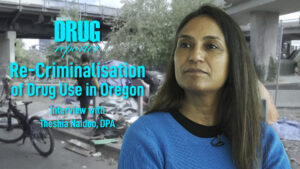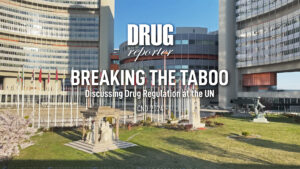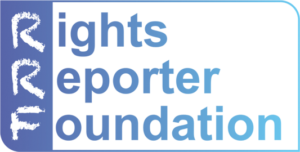ODs are preventable if provide education and tools the users
HCLU organized a seminar on the prevention of lethal heroin overdoses – this was the first civil society forum on this subject in Hungary. More than 60 participants attended the event from all around the country, mostly treatment providers, outreach workers and peer educators, but law enforcement and governmental institutions were also represented. The aim of the seminar was to assess current needs and identify best practices for OD prevention. In his introductory speech Peter Sarosi (HCLU) emphasized that OD is a major cause of death among young people in Europe, more IDUs die in OD than in AIDS – but OD prevention is still in its infancy. When 9 people died in heroin OD in a single week in August the public reaction was often based on fear and moral panic. There are common misconceptions about heroin overdose, for example that heroin users are doomed to early death and ODs are not preventable, or that lenient criminal sanctions cause the rise of OD deaths. The governmental drug coordination committee (KKB) made a progressive OD prevention strategy recently, but the question is if its measures can be implemented without appropriate resources. The government still provides much more resources on law enforcement measures with unproven effectiveness than on increasing access to harm reduction interventions based on evidence. Naloxone, an essential medicine that can easily block heroin ODs and revive victims is available at all emergency sevices and ambulances in Hungary, however, its use is restricted to specialist doctors.
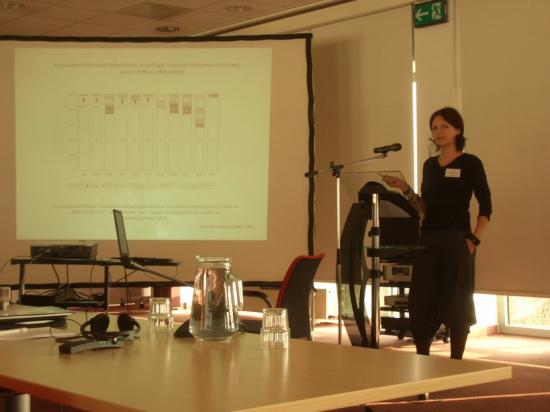
Virág Kováts (Bluepoint)
Virág Kováts (Bluepoint Drug Consultation Center and Clinic) presented the results of the case study on the background of the 9 lethal heroin ODs in August. She explained that most victims have been opiate dependent for several years, their average age was 30, they often combine the use of heroin with other drugs like alcohol and tranquilizers. Most of them lived with their parents, who often also had alcohol or drug abuse problems or a serious disease. Many of the victims had already entered abstinence-based treatment programs several times but they couldn’t maintain abstinence for a longer period. The heroin they used on their last day was somewhat stronger in some cases than the average potency in Hungary, but not extremely stronger than the usual dosage they used. In one case a homeless person overdosed on a weak potency heroin (less than 15%). There was a case when the combined use of several drugs (alcohol, ketamine, GHB, MDMA, cocaine, heroin) led to death, in other cases low level alcohol concentration in the blood was detected. According to toxicological investigations the heroin did not contain contaminets or toxic materials. Most of them were not alone when they overdosed. If the symptoms of OD are recognized, and the emergency services are informed in time, the lives of the victims could be saved. These results confirm what we know about ODs from the international literature: early intervention has a crucial importance.
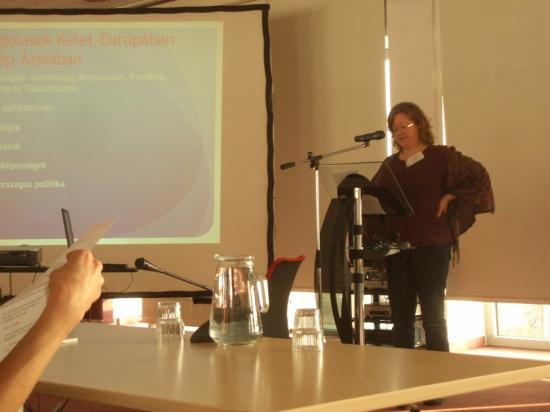
Shona Schonning (EHRN)
Shona Schonning (EHRN) presented the results of EHRN’s new report on OD prevention in Eastern-Europe and Central-Asia (![]() ). She pointed out that data available on ODs were minimal because of poor data collection, limited access to toxicological resources and concerns about police involvement. According to estimations 20% of IDUs experience OD within a year and 4 out of 100 ODs are lethal – but ODs are not a priority for national drug policies. Therefore the expected number of OD deaths can be extremely high in some FSU countries. Naloxone distribution is an effective way to prevent ODs: it is estimated that 0,4-0,8% of naloxone kits may result in a life saved that would otherwise be lost. This means that we can save a life if we invest 375-750 USD in naloxone distribution, plus the costs of the program itself. She highlighted the promising results of naloxone distribution projects in Russia and Tadjikistan.
). She pointed out that data available on ODs were minimal because of poor data collection, limited access to toxicological resources and concerns about police involvement. According to estimations 20% of IDUs experience OD within a year and 4 out of 100 ODs are lethal – but ODs are not a priority for national drug policies. Therefore the expected number of OD deaths can be extremely high in some FSU countries. Naloxone distribution is an effective way to prevent ODs: it is estimated that 0,4-0,8% of naloxone kits may result in a life saved that would otherwise be lost. This means that we can save a life if we invest 375-750 USD in naloxone distribution, plus the costs of the program itself. She highlighted the promising results of naloxone distribution projects in Russia and Tadjikistan.
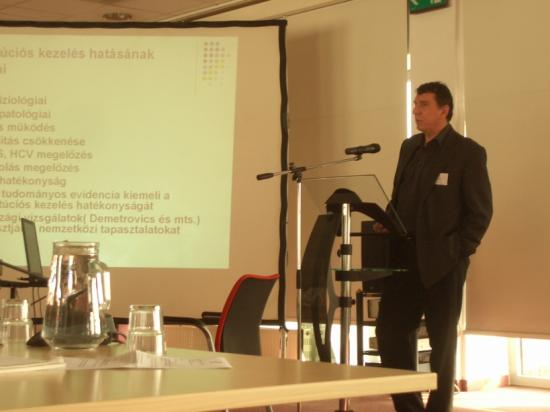
Dr. József Csorba (Nyírő Gyula Hospital)
Dr. József Csorba, the head of the greatest methadone program in Hungary (Nyírő Gyula Hospital, Budapest) explained the recent situation of opiate substitution in the country. Recently a new treatment site was opened in the town of Eger (Northern Hungary), and a new medication (Suboxone) was introduced last year, but it is still in pilote phase and professionals are fighting for mainstreaming it. The coverage of substitution treatment is still very low, there are less than 1000 people on substitution treatment but the number of IDUs is estimated to be ten times more. According to a research Budapest IDUs think methadone substitution is the least accessible service. There are accusations that lenient rules at treatment sites lead to the diversion of methadone to the black market, but according to Dr. Csorba the real reason is that the treatment demand exceeds supply. The main barriers are the lack of resources to increase access and skilled professionals who are open to start substitution treatment at existing treatment sites.
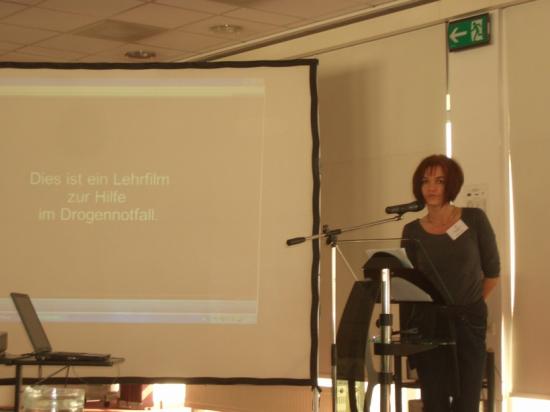
Kerstin Dettmer (Fixpunkt, Berlin)
Kerstin Dettmer represented the NGO Fixpunkt based in Berlin, Germany. She spoke about the experiences of her organization with the model OD prevention program they started in 1998 (![]() ). They organized first aid courses to drug users, relatives and professional helpers. After each course they provided the participants with OD prevention kits, containing two naloxone vials. Participants were educated about the risks and usage of naloxone injections, as well as about the symptoms of ODs, firs aid technics and enabled to give a responsible reaction in emergency situation. They trained 1615 people in four years, they provided 264 naloxone kits. They registered 105 cases in which naloxone was used in OD prevention. In the majority of cases drug users used naloxone in an appropriate and responsible way. However, their willingness to call the ambulance was very low because they were concerned about police involvement or the reactions of neighbours. Fixpunkt made several educational short films on various subjects (some of these movies are available in English and Russian subtitles as well), she presented us a video on OD prevention.
). They organized first aid courses to drug users, relatives and professional helpers. After each course they provided the participants with OD prevention kits, containing two naloxone vials. Participants were educated about the risks and usage of naloxone injections, as well as about the symptoms of ODs, firs aid technics and enabled to give a responsible reaction in emergency situation. They trained 1615 people in four years, they provided 264 naloxone kits. They registered 105 cases in which naloxone was used in OD prevention. In the majority of cases drug users used naloxone in an appropriate and responsible way. However, their willingness to call the ambulance was very low because they were concerned about police involvement or the reactions of neighbours. Fixpunkt made several educational short films on various subjects (some of these movies are available in English and Russian subtitles as well), she presented us a video on OD prevention.
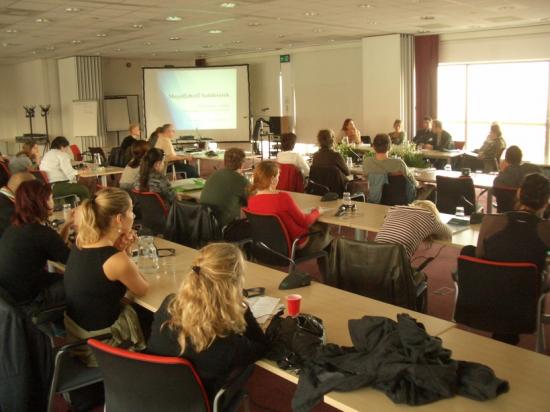
Afternoon session
In the afternoon session treatment providers, governmental and law enforcement officials discussed the possibilites of introducing OD prevention programs in Hungary. Several barriers were identified, for example the regulation of naloxone itself, which can be changed, but only with the involvement of pharmaceutical companies. According to service providers their clients are willing to participate in OD prevention courses, in some districts of Budapest with open drug sceene there is a need for an injection room too. Mr. Péter Portörő, the head of the Drug Unit of the Ministry of Social Affairs and Labour said the government is open for new solutions but it can provide resources only after a thorough assessment of local needs and possibilites. He promised that the government will provide funds for researchers to make a needs assessment. Dr. Zsolt Németh police colonel (Police Academy) emphasized that we need to change the attitudes of police officers to drug users, and we have to integrate this into the education of policemen (therefore he invited some of his students to attend the event). Aftery many years of advocacy of HCLU the ambulance services are required not call the police in OD cases, but many IDUs are still afraid of the legal consequences.
Sárosi Péter

